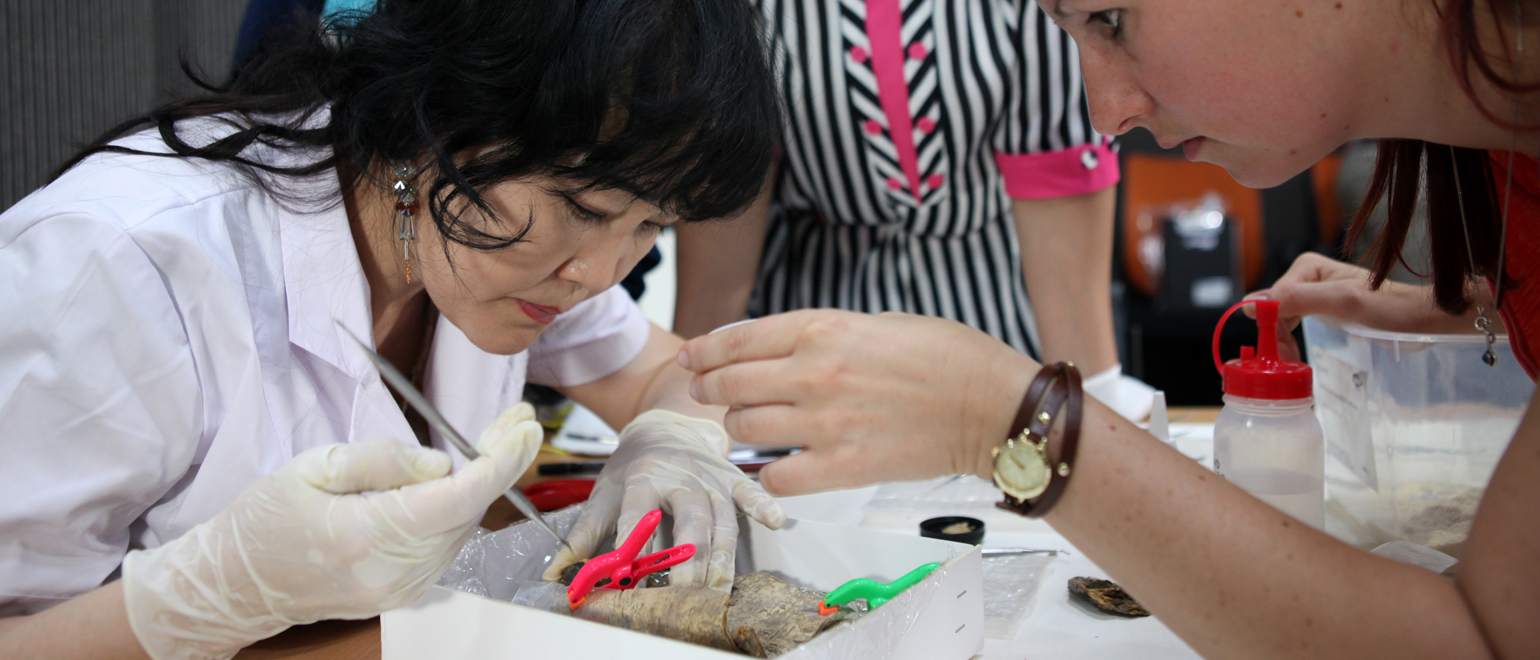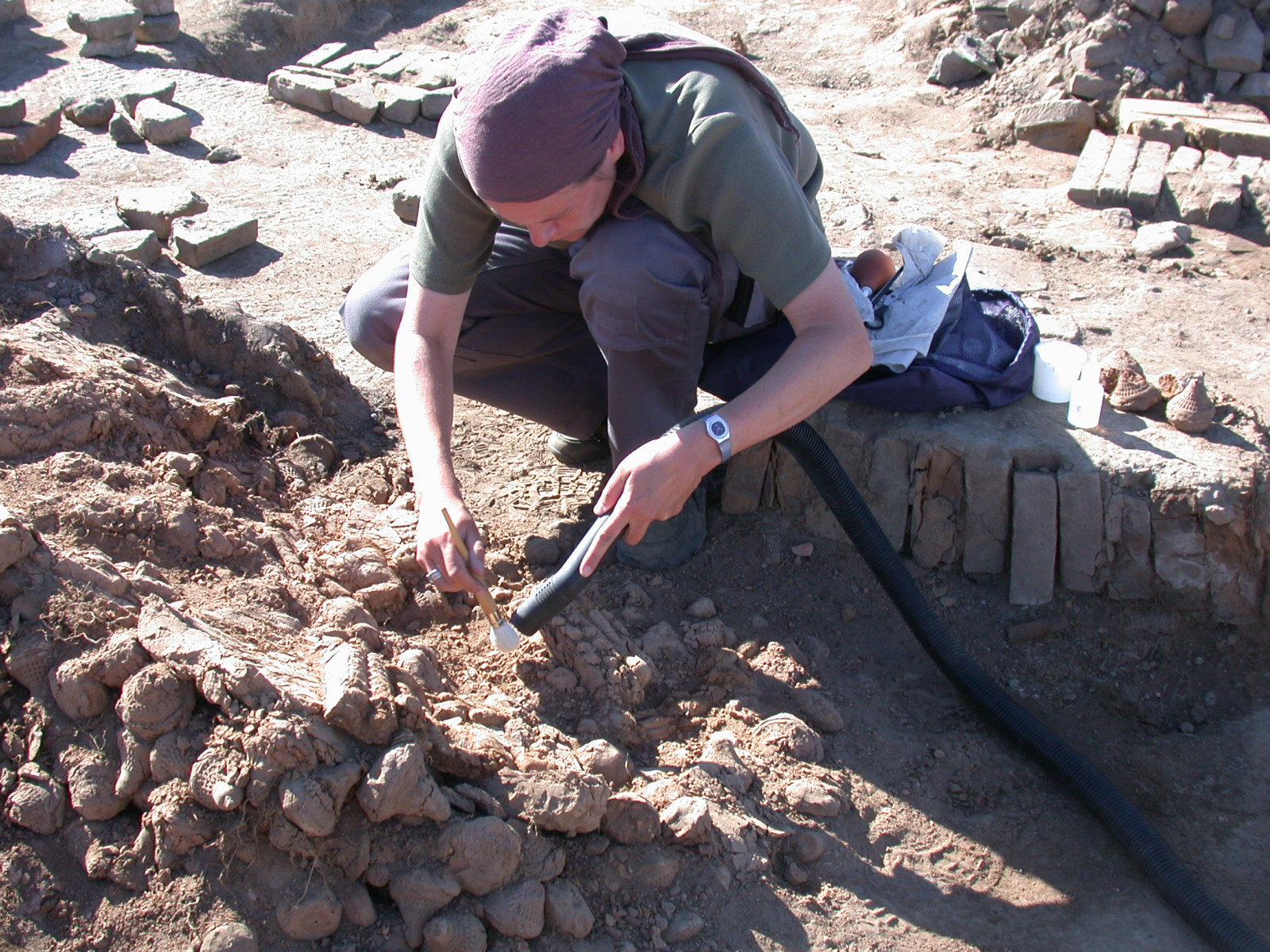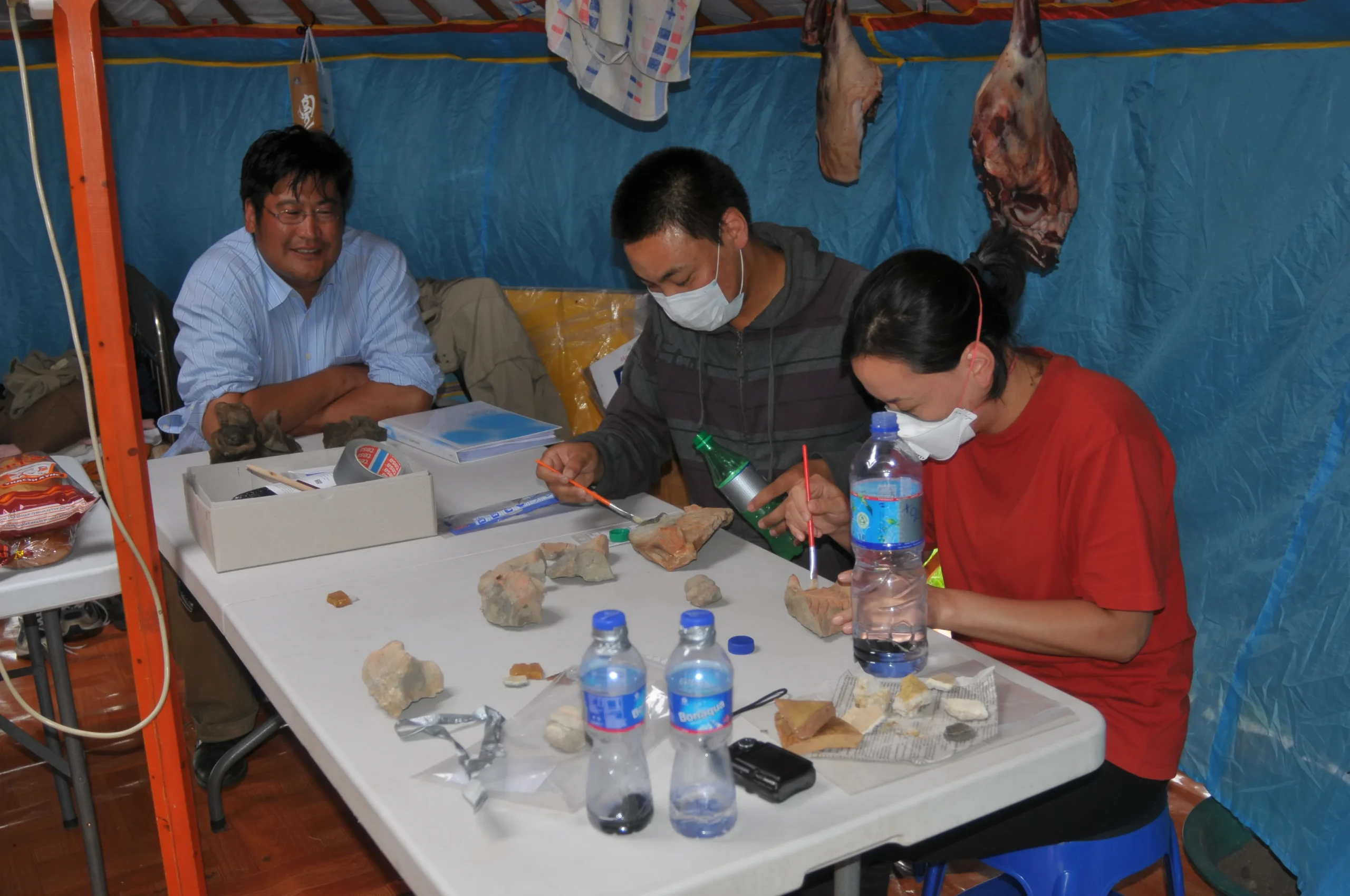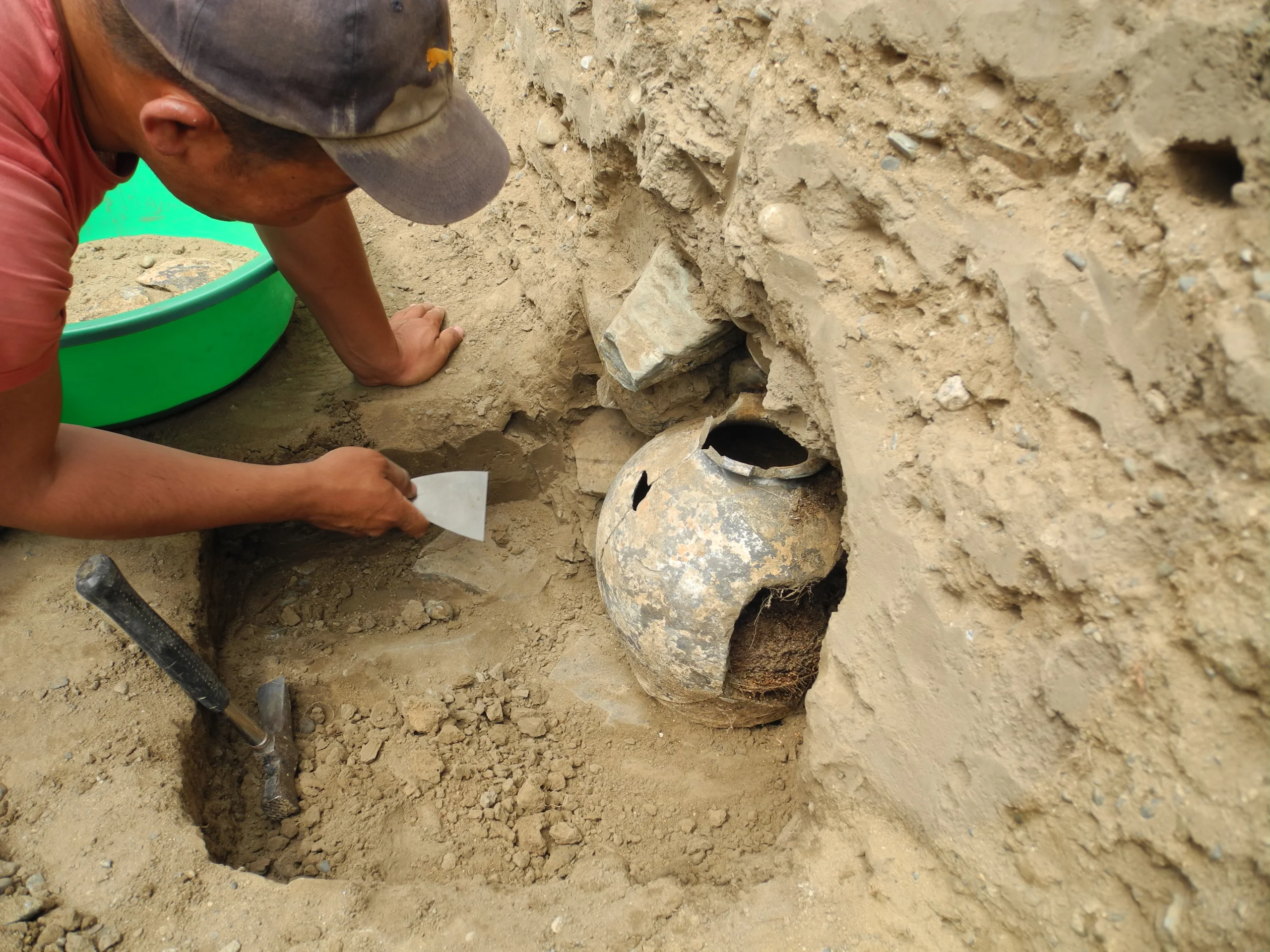
Restoration Collaboration
The excavation of finds and features also always means dealing with the restoration, storage and preservation of the discovered finds and architectural remains. As part of the archaeological projects in the Orchon Valley, numerous measures have been jointly implemented in this area.
Restoration and Conservation of Archaeological Finds
Restoration of archaeological finds and preventive conservation also play a major role in archaeology. The term “archaeological restoration” covers the restoration of the find material, as well as its recovery and documentation and subsequent storage in a depot. The aim of restoration is to make the object tangible again while preserving as much of the original substance as possible. The knowledge gained during restoration, such as information on manufacturing techniques, materials used and traces of use, provides valuable information about the object. With the help of preventive conservation, which deals with the packaging and storage conditions of the objects following the excavation, the aim is to preserve the object for as long as possible. To this end, the environmental parameters such as room climate and packaging materials are selected in such a way that further changes to the object are prevented or slowed down.

Preparations
In principle, it makes sense to consider the expected find material before the excavation and to prepare appropriate conservation measures in order to be able to carry out initial treatment of fragile objects during the excavation or immediately afterwards. It must be taken into account that different materials require different treatment. For example, archaeological textiles must be treated differently to objects made of metal or ceramics. Another aspect that has a considerable influence on the state of preservation and the resulting measures is the condition of the soil. Objects from wet soils require different treatment than finds from dry soils. After the initial treatment on the excavation, the finds are taken to the workshop and treated there to prevent further damage.

Restoration for the Museum Exhibition
In special cases, for example when a ceramic vessel is to be presented in an exhibition, the restoration can go so far as to make a large addition to a ceramic vessel in order to make the vessel fully tangible again. Strictly speaking, however, an object can never be restored to its original state, as damage or changes to the material can never be reversed.
In addition to small archaeological finds, architectural relics such as walls or the remains of wooden post-and-beam buildings can also be conserved and restored. During the excavations in Karakorum, the professional support of restorers was repeatedly called upon. Thanks to the construction of the Kharakhorum Museum, including a restoration workshop, in 2011, it is now also possible to process and appropriately store finds on site. Thanks to close cooperation and the organization of workshops, numerous finds from the excavations have been properly restored and stored.
